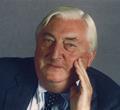We can also learn a lot from the last reactor built in Britain, Suffolk's Sizewell B. Here, key members of the project team share their memories with Graham Ridout
The world has changed a lot since the UK nuclear industry reached its zenith with the opening of the pressurised water reactor at Sizewell B on the Suffolk coast in 1995. But there are still lessons to be learned from its construction …
Making the case for Sizewell B
The Sizewell B inquiry lasted from January 1983 to March 1985 and sat for 340 days.
The evidence considered included more than 4000 letters from objectors. Only the inquiry into Heathrow's Terminal 5 has lasted longer.
Brian Henderson, the former chairman of architect YRM, was the project architect at Sizewell B. He recalls: "Every stone was unturned by the inspector [Sir Frank Layfield] during the inquiry. When I was giving evidence, there were about 60 women at the back of the hall singing songs like ‘We shall overcome', so I had to almost shout.
"But when I went with Layfield to meetings in the local villages, the issue that most concerned people was the extra lorry traffic that would be generated by construction."
Layfield was highly respected but even impartial observers claimed his hands were tied by the scope of the inquiry. They felt the inquiry was focused on whether Sizewell was a suitable location, rather than on the business case for the nuclear power station, or on the disposal of radioactive waste.
Henderson now concedes: "I don't think as much work was done as should have been on how to safely disperse the waste."

Tom Curtin, managing director of Green Issues Communications, says public relations in the nuclear industry at the time of the inquiry were lamentable. "Communications from the nuclear industry were poorly done. The industry adopted a military mentality - that the public shouldn't object to nuclear power because it was good for the country."
That is likely to change with the rise in opposition to nuclear power. But could contractors be targeted by extremists, as happened to the builders of an animal research laboratory in Oxford? Curtin does not think so, though he did receive hate mail and threatening phone calls while working for nuclear waste disposal agency Nirex in the mid-1990s. "I don't think nuclear energy is as emotive a subject as animal rights. It may not reach the extent of the actions taken by the animal rights extremists, though there are extremists in all organisations."
Henderson says the only intimidation he faced while working on Sizewell B was from his 13-year-old son, who "threatened" to mobilise school mates to picket YRM's office in London. However, he believes the public's perception of nuclear power has changed since then and firms may be at some risk.
What future project teams can expect
It will take a very good agreement with unions to prevent industrial action. Sizewell B, like many large sites, was subjected to strikes and demands for higher wages.
Services contractor Babcock Construction even took three unions to the High Court, claiming they had used the smokescreen of health and safety concerns to mask an unofficial strike over pay. The walk-out lasted six days and involved 400 workers, costing the contractor £500,000. Electrical contractor GEC and main contractor Laing also felt the effects of industrial unrest.
During construction, one local protester made headlines after gaining entry to the site and claiming he had added sugar to the concrete forming the 1.4 m thick walls to the reactor dome.
Builders of new power stations can expect protesters to try similar stunts. Despite the tighter security introduced in the wake of 9/11, two groups from Greenpeace managed to breach security at Sizewell to highlight their opposition to nuclear power as well as the ease with which terrorists could attack the plant.
The project architect

Brian Henderson, now retired, was YRM’s project architect at Sizewell B. He went on to become the company’s chairman. He worked on the nuclear power station from its inception to the completion of construction.
“Initially, I had the normal anxieties about working on a nuclear power station,” he says, “but I was impressed by the integrity of the people at the Central Electricity Generating Board and thought they could be trusted. The station is on a site of outstanding natural beauty and my concern was to make it look as good as it could.
“After Chernobyl, the CEGB wanted to put a square box on top on the dome to act as a secondary containment vessel but, after a lot of arguments, they agreed to put a white enamel dome on top, which I think works well.
“My advice to anyone designing a new nuclear station would be to think ‘less is more’ and keep the design simple. Many people think that for a large industrial building, putting ribbed aluminium on the walls is all that is needed – it’s not.
The materials specialist

Richard Rogerson is now a partner in materials consultant Sandberg. At the time, he was an assistant manager at Sandberg and was on site throughout the main construction programme. His duties included testing construction materials, primarily concrete and structural steel.
“Although I’d been involved with nuclear power stations when working for Taylor Woodrow, quality assurance came to a head at Sizewell and raised it to a new level,” he says. “I undertook a lot of auditing work of the testing regime and the procedures used.
“If we go back to nuclear power, the quality assurance procedures used at Sizewell should stand whoever builds the new stations in good stead.
“To be involved in an iconic project like Sizewell was definitely good for my CV.”

























No comments yet